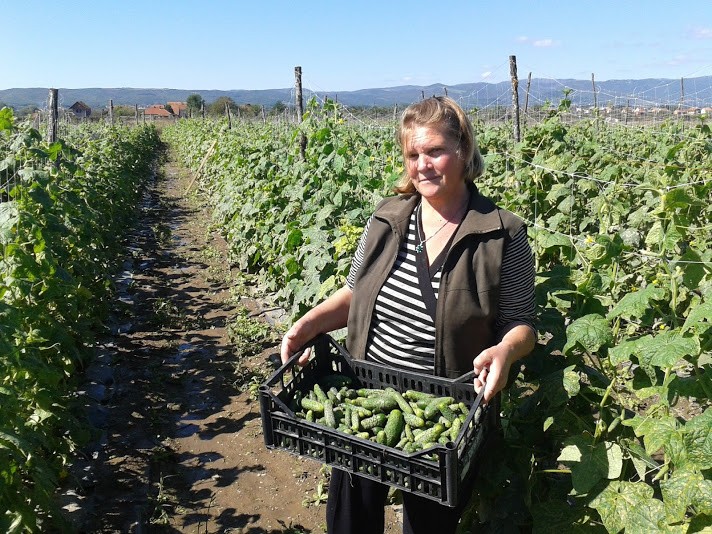
Jan. 2015—Kosovo’s gherkin farmers are no longer in a pickle, thanks to assistance in sustainably, profitably and dramatically increasing production of this sought-after crop.
Kosovo, like many other European countries, has a huge appetite for gherkins—the immature fruit of the cucumber plant. Home canners and industrial processors alike pickle and preserve the fresh-picked young cucumbers in late summer and early fall. Pickles are a mainstay of many a traditional winter meal.
For years, farmers in Kosovo didn’t grow enough gherkins to meet local demand. Now, with USAID’s assistance, annual domestic production of gherkins has grown to 2,000 metric tons, supplanting imports.
USAID, through its New Opportunities for Agriculture (NOA) project, has focused on introducing new varieties and production techniques to Kosovo’s gherkin farmers, many either women or minorities.
The newly introduced improvements include the production of seedlings in trays filled with quality substrate, as well as the use of drip irrigation, plastic mulch and more targeted fertilization. Farmers also have begun using high trellises to grow cucumber plants, which increases their exposure to air and sunlight which, in turn, favors growth, discourages pests and facilitates thrice-weekly harvests in season.
In 2014, USAID directly assisted 22 gherkin farmers—of which 15 were women. Despite heavy rains during the 90-day growing season, the farmers saw good yields on their 0.2-hectare (0.49-acre) open-field plots.
Selvete Fetahu had to overcome the doubts of her husband and sons to convince the family to plant gherkins for the first time last year. Their plot, outside Podujevë/Podujevo in northeastern Kosovo, yielded 7 tons of gherkins. The harvest netted her family 5,600 euros, which they used to pay off an agriculture loan—and to rent more land with an eye toward planting even more gherkins this year.
“We had no trouble at all in selling our gherkins,” says Fetahu. “It’s a great crop to cultivate.”
Farmers like Fetahu are eager to learn and put into practice the ongoing technical assistance. “We never had a single problem in the entire process because we followed the technical advice of the USAID experts, who guided and directed us all the way to the end,” she says.
To further diffuse the innovative changes in the gherkin industry, USAID has staged field days for interested farmers. A recent such peer-learning event in Fetahu’s village drew dozens of farmers.
USAID’s four-year New Opportunities for Agriculture project has been working with Kosovo’s farming industry since January 2011 to create new market linkages, increase and diversify agricultural products, improve food quality and safety, and increase affordable and accessible credit.
LINKS
Follow @USAIDKosovo. on Facebook, on YouTube







Comment
Make a general inquiry or suggest an improvement.